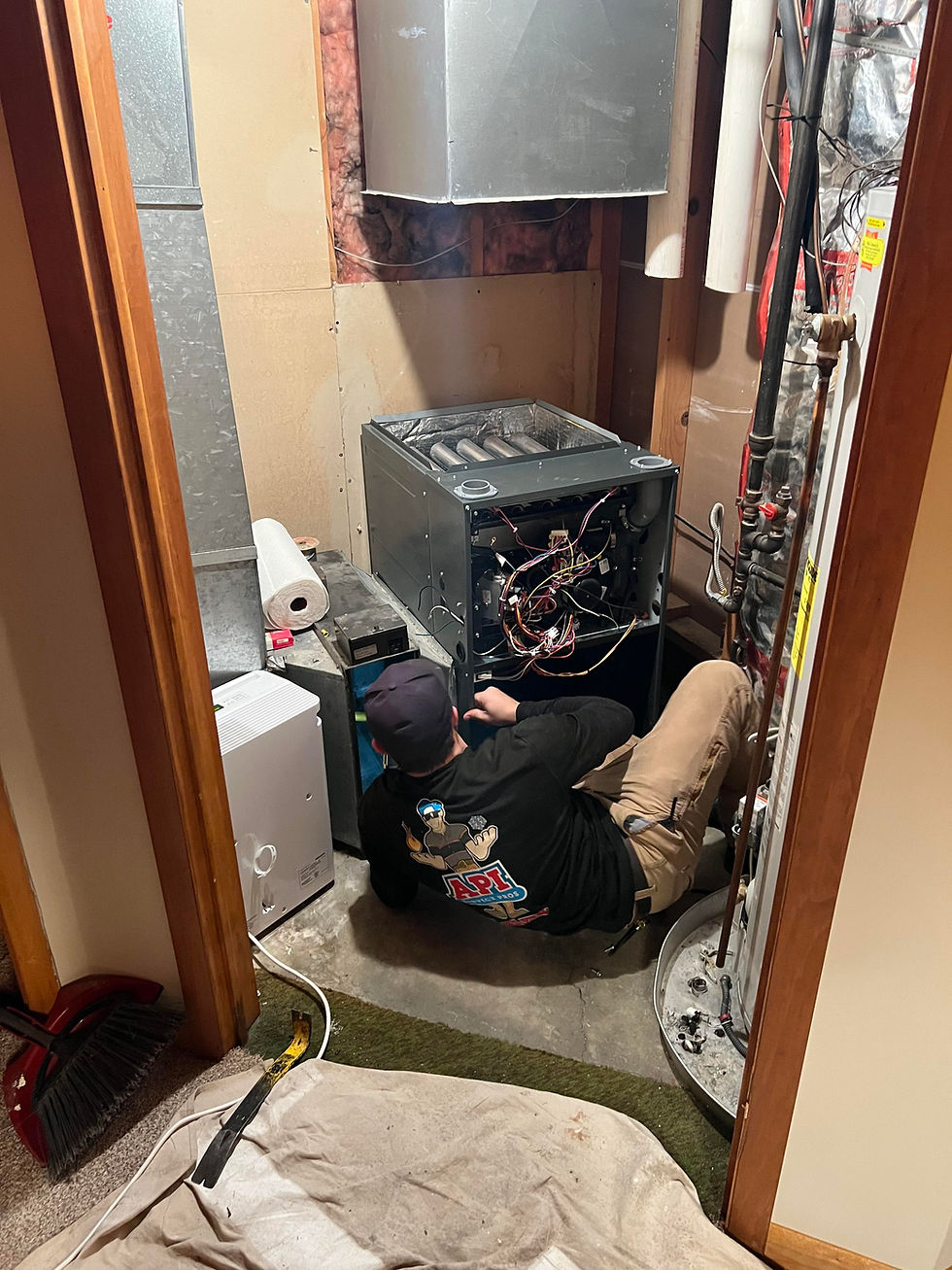Identifying and Fixing Duct Leaks in Your HVAC System
- API Service Pros

- Apr 11, 2024
- 2 min read
Your HVAC (Heating, Ventilation, and Air Conditioning) system works tirelessly to maintain a comfortable indoor environment year-round. However, hidden duct leaks can compromise its efficiency, leading to energy wastage and decreased indoor comfort. In this post, we'll discuss how to identify and fix duct leaks in your HVAC system, ensuring optimal performance and energy savings.

Identifying Duct Leaks:
Detecting duct leaks can be challenging since they are often concealed within walls, ceilings, or attic spaces. However, there are several telltale signs that may indicate the presence of duct leaks, including:
1. Uneven Heating or Cooling: Rooms that are consistently warmer or cooler than others, despite your HVAC system running, may indicate air loss through duct leaks.
2. Increased Energy Bills: If your energy bills have been steadily rising without a corresponding increase in usage, it could be due to wasted energy escaping through duct leaks.
3. Dust Buildup: Excessive dust accumulation around air vents or registers may indicate that unfiltered air is entering the ducts through leaks.
4. Whistling or Hissing Sounds: Audible air leaks may produce whistling or hissing noises near duct openings or along duct runs.
Fixing Duct Leaks:
Once you've identified potential duct leaks, it's essential to take corrective action to restore your HVAC system's efficiency and performance. Here are some effective strategies for fixing duct leaks:
1. Sealant Application: Use mastic sealant or metal tape to seal leaks at joints, connections, or gaps in ductwork. Avoid using duct tape, as it tends to degrade over time and may not provide a long-lasting seal.
2. Insulation Installation: Insulate ducts in unconditioned spaces, such as attics or crawl spaces, to prevent energy loss due to heat transfer. Insulation also helps reduce condensation buildup, minimizing the risk of mold and mildew growth.
3. Professional Inspection: Consider hiring a qualified HVAC technician to conduct a thorough inspection of your ductwork using specialized equipment, such as a duct blower test. This test pressurizes the duct system to detect leaks accurately.
4. Duct Replacement: In cases where ducts are severely damaged or deteriorated, replacement may be necessary to ensure optimal performance and efficiency. Upgrading to insulated or sealed ducts can further improve energy savings and indoor comfort.
5. Regular Maintenance: Implement a routine maintenance schedule for your HVAC system, including periodic duct inspections and cleaning. Addressing minor issues promptly can prevent them from escalating into costly repairs down the line.
Duct leaks can compromise the efficiency and performance of your HVAC system, leading to energy wastage and decreased indoor comfort. By recognizing the signs of duct leaks and taking proactive steps to seal and insulate ductwork, you can maximize energy savings and enjoy a more comfortable home environment. Remember, a well-maintained HVAC system is key to keeping your cool year-round.





